Srila Prabhupada and His Palace
By Madhava Smullen for ISKCON New Vrindaban Communications
Archival Research by Chaitanya Mangala Das
It’s a crisp, frosty November day in the Appalachian foothills of West Virginia, bare trees silhouetted against a clear blue sky. On one hilltop, an unusually royal building stands out, sunlight glinting off its gold-filigreed domes and spires.
Participants of ISKCON New Vrindaban and ECO-Vrindaban’s winter 2016 Board Meetings, wrapped up warmly in coats and scarves, are being shown the latest renovations at Srila Prabhupada’s Palace by restoration manager Gopisa Das.
He points out the new drainage system, rose-colored steps, and weatherproof outer wall with ornate window arches, and describes plans to rebuild the Palace roof. “My concern in all of this is, ‘Am I pleasing Srila Prabhupada?’” he says. “And, am I taking care of his Palace?”
It’s the same loving service mood that devotees had when first planning to construct a home for Srila Prabhupada back in 1972, during a similarly frigid New Vrindaban winter. And if we take a trip back there, we’ll see how Prabhupada reciprocated that love, and how he had such a close connection with his Palace that it still inspires such devotion today.
As early as 1968, Srila Prabhupada was already saying that he wanted to be less involved in the day-to-day management of ISKCON, and focus more on what he saw as his top priority and longest lasting contribution – translating Vaishnava scriptures and writing his purports.
New Vrindaban’s peaceful rural atmosphere, he felt, would be the perfect setting. “If this piece of land is turned into New Vrindaban then I shall forget to return to Indian Vrindaban,” he wrote. “I am getting older and older, so actually if I get a peaceful place as described by you, the rest of my life will be continued in translating Srimad Bhagavatam and other Goswami literature…”
Srila Prabhupada first visited New Vrindaban in 1969, and again in September 1972, to give his epic Bhagavat Dharma discourses to hundreds of devotees, guests and reporters. During this second visit, he stayed in an old farmhouse on the Madhuban property with no running water, indoor toilet or shower facilities.
Prabhupada was happy to adopt the simple mood of New Vrindaban, comparing it to his old home in the original sacred Indian town. “This Vrindaban, that Vrindavan, no difference,” he said.
But New Vrindaban residents wanted their spiritual master to be more comfortable. Some of them decided they should build a nice home for him to live in during future visits, and especially if he did move to New Vrindaban long term.
Before that, however, they planned to construct a Govindaji temple, the first of Prabhupada’s seven proposed replicas of Vrindavan’s main mandirs.
But one winter’s day in 1972, as they were discussing design plans for the temple, they came across a passage in the Nectar of Devotion, in which Lord Shiva tells Parvati, “The worship of the Supreme Person is considered to be the highest. But even higher than the worship of the Lord is the worship of the Lord’s devotees.”
The message was clear. The Brijabasis decided to first construct a home for Srila Prabhupada. It would be a simple little retreat where he could retire to finish his books while his disciples took over the management of preaching work. It might, they estimated, take a year to build.
But by the time the groundbreaking ceremony was held at the area dubbed “Guruban,” during a June 1973 festival, the plans had become so elaborate and ambitious that Prabhupada’s home was being referred to as his “palace.”
Devotees’ excitement escalated over the grand weekend festival, which saw five fire yajnas conducted. Srila Prabhupada was just as thrilled. “I shall go to New Vrindaban as soon as your palace is finished,” he wrote that July. “Jaya!”
The team of devotees that set about building the Palace worked with no pay and very little experience, training themselves in construction and artisanal skills. And they labored through extraordinary challenges: working in the hot sun during the summers and in freezing conditions during the winters, they had to lay drains and mix concrete by hand because there was no electricity.
“There was no running water either,” recalls Soma Das. “We would scoop the water out of mud puddles to mix the cement with. And when those dried up, we’d load plastic barrels into a wheelbarrow, walk half a mile to the Madhuban farm, draw water from the well there, and wheel it all the way back to the construction site.”
Despite all these hardships, the devotees felt fortunate and grateful to be able to render service to Srila Prabhupada in New Vrindaban. And Prabhupada boosted everyone with his loving encouragement when he came to see his Palace for the first time in July 1974.
An entourage followed him as he took a tour of the construction site, tapping the walls with his cane to make sure they were solid, and beaming as he was shown where his bedroom, bathroom, temple room and study would be.
“Srila Prabhupada,” Bali Mardan Das commented, “It says in the Krishna book that the palaces of Dwarka didn’t even need any light, because they had so many jewels on the wall.”
Prabhupada stopped walking and guestured at the devotees working on his Palace. “These devotees,” he said, “Are my jewels.”
When Kirtanananda Swami told Prabhupada the Palace would be ready soon and asked him to be patient with them, Prabhupada said, “I already am.” He added, “If you want, I am already living here.”
As he left, he personally thanked the workers, lifting their hearts.
Srila Prabhupada continued to exhibit a lot of enthusiasm for the project and for moving to New Vrindaban. In letters later in 1974, he wrote that he had “enjoyed the atmosphere of New Vrindaban” during his visit, and that “When my palace will be ready I shall go there and stay. I like very much that place, very calm and quiet.”
In September 1974, Kuladri Das visited Prabhupada in Vrindavan, India. During his stay, Prabhupada told him several times that he would like to live in New Vrindaban as soon as his Palace was ready. Later, Prabhupada’s servant Srutakirti mentioned that he would ask for updates once a month.
When New Vrindaban devotees traveled to Hawaii in January 1975 to visit Prabhupada, they showed him designs for the Palace’s windows, doors, and floors, and asked if he liked them. Laughing, he replied, “One would have to be a great fool not to like them.”
Meanwhile, the team back in New Vrindaban was working hard on the Palace, and the first signs of its future opulence began to emerge. A marble workshop was established, and marble floors were laid in Prabhupada’s bedroom and study, which devotees spent months polishing.
Thirty lotus arches were made to frame the stained glass windows. The marble floor of the temple room, with its double lotus center, was laid. Ornate capitals to top the columns were carved out of clay from New Vrindaban’s own Kesi Ghat. Devotees began construction on the roof.
The winter of 1975 was very austere. The concrete block stove in the marble shop only warmed the area three feet in front of it. Exotic marble slabs arrived frozen together. But still, devotees worked on, heartened by Srila Prabhupada’s continued encouragement.
By the time Prabhupada visited his Palace for the second and final time in June 1976, most of the concrete work was done, and finishing work was underway. Prabhupada first visited the marble shop, admiring the saw and polisher. The construction team showed him around excitedly, while other devotees tried to peer in through the windows.
Prabhupada then toured the Palace itself, visiting the central hall, study, and his bedroom. He admired the beautiful marble inlay work, decorative arches and ornate furniture. He particularly liked his hand-carved desk topped with a solid slab of onyx, commenting, “Nowhere else in the world do I have such a desk.”
He was very appreciative and impressed that the devotees had done all the work themselves, and remarked that they were working with the special inspiration of the Lord.
When the devotees asked him if he would really come to stay in the Palace when it was finished, Prabhupada replied that yes, he would. He then repeated what he had said during his 1974 visit, “Actually, I am already living here,” and further assured them, “Because you are all desiring it.”
Prabhupada continued asking about his Palace even up to the last time New Vrindaban devotees visited him in Vrindavan, India in late 1977, as his health was failing. In a particularly heartfelt conversation on October 6th, they showed him pictures of his beautiful prospective home. Prabhupada deeply appreciated the devotees’ handiwork, saying, “You have got so many artists. How they have learned so much?”
Commenting on New Vrindaban in general, Prabhupada said, “You are fulfilling my dream, New Vrindaban. I dreamt all these things.” He lovingly added, “And if I survive, I have a strong desire to go and live there. It will be a great pleasure.”
The devotees responded that they already felt he was living at the Palace, as they were doing Puja to him twice a day there, and Prabhupada agreed, “That is the way.”
“Would you please pray to Krishna to stay with us?” Kuladri asked, as the mood became more emotional. “Because you’re His pure devotee, Krishna will certainly grant what you pray for. So on our behalf… I think He must want you to come to the palace, Srila Prabhupada.”
“I wish,” Prabhupada replied, commenting with a wry chuckle, “Let us see which palace I am going.”
A month later, on November 14th, 1977, Srila Prabhupada physically departed this world.
When the news reached the New Vrindaban devotees, it was like a gut punch. Shellshocked, they all gathered in the only place that made sense: his Palace.
“Devotees were bereft,” recalls Varsana Swami. “It was the darkest night of our lives. We had to hold each other up – how could we go on? But we cried, and chanted together in a mood of separation, and gradually began to feel closer to Prabhupada than we ever had. Then we began to dance jubilantly. We realized that Prabhupada’s ultimate gift is service in separation.”
That mood of service in separation inspired Srila Prabhupada’s ‘jewels’ to work harder than ever to finish his Palace as an offering of love and devotion to their spiritual master. Now it was transforming from a residence into a memorial for the pure devotee.
In 1978, the Palace became recognizable as the beautiful monument we know today. The three domes were completed, and chandeliers and furniture from India installed. Landscaping work began. The marble shop ran 24 hours a day, and devotees layed blocks from dawn till dusk to complete the outer wall.
The next year, the Palace was finished. With fifty kinds of the finest imported marbles, arched doorways, brass balustrades, hand-carved doors, gorgeous stained glass windows, and finely detailed black and gold domes, it was a sight to behold.
At last, during an exultant four-day festival over Labor Day in August 1979, Srila Prabhupada came home to his Palace. He might not have been physically present during the Palace opening event, but as thousands of devotees from all over the world gathered to chant in a tumultuous kirtan, carry his murti on a palanquin, and install him on his vyasasana in his Palace, there was no difference.
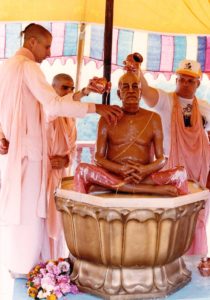
Prabhupada’s murti abishek at his Palace during Prabhupada Festival Radhanath & Brahmananda – early 1980s.
Prabhupada’s Palace was the first Samadhi to be completed for Srila Prabhupada in the world. To this day, it remains the only one of its kind in the West, a renowned Smriti Samadhi, or memorial shrine to ISKCON’s Founder-Acharya, and a monument to the love between Prabhupada and his disciples.
Today, as the crown jewel of New Vrindaban, Srila Prabhupada continues to reside in his Palace, embodied through both his murti form and his instructions. There, his sincere followers can still associate with him. And that connection cannot be underestimated.
As Srila Prabhupada himself reminded the devotees during his 1976 visit, “I am already living here… because you are all desiring it.”
ECO-Vrindaban Board Meeting Minutes 05/21/2017
ECO-Vrindaban Board Meeting Minutes 05/21/2017
Mission Statement: ECO-Vrindaban promotes simple living, cow protection, engaging oxen, local agriculture, and above all, loving Krishna, as envisioned by Srila Prabhupada, the Founder-Acharya of ISKCON New Vrindaban.
Participating Directors: Anuttama, Chaitanya Mangala, Kripamaya, Ranaka, Sri Tulasi Manjari and Vraja.
Participating Advisors: Devala, Jaya Krsna, Makara, Olivia, Venkatachalapati
Participating Managers: Nitaicandra
Recording Secretary: Jamuna Jivani
1. Ranaka’s Monthly Report
- Temple Barn: six cows are being milked daily (25 gallons per day); Manjari the cow has been retired from the milking herd
- Festival of Inspiration: the Milking Barn supplied all the milk, yogurt and cream for the prasadam
- Valley Barn: Ray has the hay equipment ready and will begin harvesting once there are three consecutive days without rain.
- 1,500 lbs. of seed potatoes have been planted. These need to be cultivated and weeded from now until the Fall
- Ranaka met with Kalakantha and Bhakti Caru Swami during the FOI.
- Fil and Sukhayanti arrived and moved into the field house at Nandagram. Fil began constructing a bullpen there.
2. Nitaicandra’s Monthly Report
- Flower Garden: the production garden at Vidya’s house is about 80% planted now with marigold and lily starters. Also, vegetables (carrots, radishes, lettuce) have been planted there.
- Teaching Garden: the garden has been prepped for the starts to be planted.
- Vegetable Garden: hundreds of starts are being transplanted; Triticale is doing well as it approaches the “soft dough” stage; the seed potatoes were planted
- FOI: ECO-V presented five workshops:
- Composting and Soil Building
- Seed Starting and Transplanting
- Planting a Garden of the Four Sisters: Beans, Squash, Corn, and Sunflowers in a Bed of Rolled Triticale.
- Butter-making/Cow, Ox and Bull Care/Milking
- Wild Edible and Medicinal Plant Identification Walk
- Cows: Nandagram barn is being cleaned out; the new cows at Bahulaban are very gentle and are adapting well to their new home; Bahulaban barn has been cleaned out; currently working on opening the gate up again so guests can visit the cows.
3. 2017 Farm Conference Update
Sri Tulasi Manjari reported on the previous month’s activities:
- Ranaka, Nitaicandra and Sri Tulasi Manjari met with Kalakantha during his visit and they refined the presentation topics:
- Ox Training
- Organic Farming
- Milk Production
- Flower Production
- Ahimsa Dairy Education
- Grow Ohio Valley has been invited to give a presentation on CSAs
- The flyer is finished and has been shared through social media. The promotion for the conference is being enthusiastically received by interested participants.
4. Festival of Inspiration Review
The ECO-V members who presented at FOI reported that their workshops were well-received and they felt inspired by teaching them. Both the children and parents were thrilled with the Kids’ Camp that was led by Sri Tulasi & Olivia.
5. Meeting with Kalakantha and Bhakti Charu Swami
During the meeting with Kalakantha prabhu and Bhakti Charu Swami, the topic of ahimsa milk was discussed, including the realities of how increasing the milking herd would affect the overall herd, and what facilities and resources are needed to care for a herd of 200 cows over twenty years. Also, a possible processing facility was discussed. A sub-committee of Nitaicandra, Ranaka, Venkatachalapati, Jaya Krsna and Ananda Vidya was formed to research the topic.
6. Wall Street Journal Article featuring Gita Nagari Farm
The Wall Street Journal wrote an article on the movement in the U.S. to improve the treatment of dairy cows, which featured Gita Nagari’s cow protection program. Overall ECO-V is very pleased to see its sister organization get such prominent mainstream recognition. One point of concern is the article referred to Gita Nagari as “the first slaughter-free dairy in the U.S.” Chaitanya Mangala is working to correct this misnomer, as actually New Vrindaban was the first. He is requesting Gita Nagari adjust their claim to “the first certified slaughter-free dairy in the U.S.” Clarifying this is especially important as devotees in New Vrindaban begin early preparations to celebrate the 50th anniversary of ISKCON cow protection in 2019.
7. Kalakantha dasa as Advisor
WHEREAS: The ECO-V Board wishes to maintain a team of advisors.
RESOLVED: The Board invites Kalakantha dasa, in his role as the ISKCON Minister of Agriculture & Cow Protection, to participate as an Advisor from May 2017 to the January 2018 Annual Meeting.
8. Talavan Property
Jaya Krsna addressed the topic of the housing shortage in New Vrindaban. The Land Advisory Committee had previously discussed possible locations for a small village, and they determined a potential location to be on one of ECO-V’s properties in Talavan, where 15-25 houses could potentially be built. He inquired as to whether ECO-V would be willing to relinquish the property for this purpose. Nitaicandra and Devala will look into this prospect and develop a proposal.
For regular updates please visit the ECO-V Facebook page.
Community Dialog Covers Village Association, Rover Pipeline, and NV50
By Madhava Smullen for ISKCON New Vrindaban Communications
On the afternoon of March 25th—after hearing inspiring news from ISKCON New Vrindaban and ECO-Vrindaban’s various department heads—Board members and Village Association members settled in for a lively community dialog on some important topics.
Village Association Foundational Document
The first was the presentation of a foundational document for the New Vrindaban Village Association. The Association defines itself as “A loving family of Krishna devotees, spiritual aspirants and friends” whose aim is “to empower and assist devotees to happily live in, or contribute to New Vrindaban.”
The Association also votes to elect members of a Village Council, through which New Vrindaban residents can participate in the governance of their community. The first vote, which elected the first Council, was carried out in November 2016.

Council member Gaura Bhakta Das presented the foundational document. It consisted primarily of rights Village Association members are entitled to, and matching responsibilities that create a good balance of reciprocation between the individual member and the group.
These included the right to spiritual guidance / responsibility to provide spiritual guidance; right to contribute freely / responsibility to focus on what we want; right of respectful disagreement / responsibility to speak up; right of involvement / responsibility to be informed; and others.
The essence of the Village Association was also boiled down to three recommendations: aim in good faith to be spiritually conscious; be a contributing community member; and be aware of Srila Prabhupada’s intents and purposes for New Vrindaban.
After Gaura Bhakta’s presentation, there was some discussion on the meaning and implications of the rights and responsibilities. Some expressed concerns that the document may be too idealistic. Gaura Bhakta responded that the Village Association needed to develop a starting point – however the document is a living one, which can evolve with community feedback.
Success in Re-Routing Rover Pipeline
Next, Gopisa Das reported on the recent legal struggles with the Rover Pipeline and success in getting it re-routed to avoid specific sacred places in New Vrindaban.

The Rover Pipeline is a 713-mile long multi-state project, starting in West Virginia and travelling through Pennsylvania, Ohio, and Michigan before ending in Canada. It will deliver gas for distribution throughout the Midwest, Northeast, East Coast, and Gulf Coast.
Rover first contacted New Vrindaban residents two years ago saying that they were seeking eminent domain – a federal right to use private property for public use – to run one of their tributary pipelines through the community.
The route they wanted to take would have passed close to Prabhupada’s Palace and directly across Madhuban hill, where previously there was a Jagannath temple and a house Srila Prabhupada stayed in during his 1972 visit. It would have then cut right through the yard of the original Vrindaban farmhouse, where Prabhupada stayed for one month during his first visit to New Vrindaban in 1969.
Devotees met with Rover over the next couple of years but could not convince them to consider re-routing the pipeline. In February 2017, with no warning, the company announced that it had acquired eminent domain from the Federal Government, and that devotees were summoned for a federal district court hearing.
That meant ISKCON New Vrindaban and ECO-Vrindaban had just days to put together a full case against the $4.2 billion dollar project. To make matters even more daunting, Rover turned out to actually be Energy Transfer Partner (ETP), the same company that ran the Dakota Pipeline through sacred Native American land.
On the morning of the hearing, devotees organized a Harinama Sankirtana protest outside the court house in Wheeling, which was filmed by Channel 7 and Channel 9 News. Vrindavan Das also gave interviews to the Pittsburgh Post Gazette and Wheeling News Register.
Gopisa and INV President Jaya Krsna Das first testified, explaining that the specific areas ETP wanted to build through were sacrosanct to Vaishnavas because of Prabhupada’s presence there. They were then directed by the judge to work out an agreement with ETP’s lawyers.
The result was that ETP agreed to re-route the pipeline away from the designated sacred spots despite having full federal support and approval. Gopisa credited this to the power of chanting the Holy Name outside the courthouse, and said it was likely that ETP did not want to face more of the kind of negative media attention that they received with the Dakota pipeline.
During Gopisa’s report, a proposal – first suggested by INV Board Director Ananga Manjari – was made that a portion of the funds INV and ECO-V receive from ETP could be used to construct a new Community Center. A majority of those participating in the discussion warmly embraced the proposal; and a decision was made to form a Community Center planning committee consisting of Village Association, INV & ECO-V members.
“We also negotiated an agreement with ETP that they would deliver to us all the trees they cut for use in building the Community Center, as well as fixing the old Vrindaban farmhouse,” Gopisa added.
Work on the pipeline is likely to start this spring.
NV 50 Plans and New Jagannath Altar
Rounding off the afternoon, Jaya Krsna Das presented plans for New Vrindaban’s 50th anniversary next year.

NV 50 themes will be integrated into every festival throughout 2018, and there will be a major celebration at the end of September 2018. There will also be a VIP event, and an Open House day for neighbors and the local community.
Meanwhile Sankirtan Das is interviewing many New Vrindaban devotees for an oral history project so that their experiences, challenges, successes and realizations can be secured for the benefit of future generations. There are plans to create both a video and book from these interviews, along with a shorter souvenier booklet with lots of photos.
Another major offering for the 50th anniversary will be that of a new altar for Lord Jagannath, Baladeva and Subhadra at the front of the temple room next year. The reasoning was that devotees currently do not get darshan of Lord Jagannath when facing the main altar during aratis, and show their backs to the Lord during gurupuja.
The move was decided based on a straw vote by residents and support from the ISKCON New Vrindaban board, GBC and ISKCON Deity Worship Ministry. The new altar will be in the spot the six Goswamis currently occupy, and will be an ornate wooden affair covered with gold and silver leaf.
Previously, Jaya Krsna promised devotees they would receive news of the move during this Spring’s weekend gathering, and the announcement was an auspicious and uplifting way to wrap up the Community Dialog.
A Facelift for Prabhupada’s Palace of Gold – May/June 2016 Back To Godhead
A Facelift for Prabhupada’s Palace of Gold
(Archival research by Chaitanya Mangala Dasa)
In the 1970s a dedicated group of devotees cooperated to build it; now a new group is determined to restore it to its former glory.
In the summer of 1965 His Divine Grace A. C. Bhaktivedanta Swami Prabhupada left India with a specific mission: his teacher, Srila Bhaktisiddhanta Sarasvati Thakura, had bestowed upon him the loving task of bringing the profound spiritual wisdom of Krishna consciousness to the Western world.
Arriving in New York City that fall, Srila Prabhupada naturally felt deep separation from Vrindavan, the sacred land of Lord Krishna where he had lived for many years. There he contemplated his mission and the methods he would employ to transplant ancient Vedic wisdom in Occidental soil. While on his way to America by sea, Prabhupada particularly felt separation from the major deities of Vrindavan, “My Lords, Govindaji, Gopinath, and Radha Damodar,” as he noted in his diary.
He soon opened his first temple on the Lower East Side of New York, and then temples in San Francisco, Montreal, Los Angeles, and London. In all these temples, deities of Krishna would grace lavish altars, assuaging his feelings of separation.
It is no wonder, then, that in 1968 when two early disciples, Kirtanananda Swami and Hayagriva Dasa, bought a farm in West Virginia – a peaceful, rustic environment that Prabhupada would name “New Vrindaban” – he quickly asked them to establish seven Krishna temples, reminiscent of Vrindavan’s seven major temples. Prabhupada wanted New Vrindaban to be a place of pilgrimage in the West.
“New Vrindaban should be taken up very seriously,” he wrote to Hayagriva, “because actually I want to develop a replica of Old Vrindaban. I have got ambition to construct there 7 temples as follows: 1. Radha Madan Mohan, 2. Radha Govinda, 3. Radha Gopinatha, 4. Radha Damodara, 5. Radha Raman, 6. Radha Gokulananda, 7. Radha Syamasundara.”
After visiting New Vrindaban, Prabhupada said he wanted to make it his new home. He felt comfortable there and saw it as a genuine holy place, a manifestation of the eternal Vrindavana, the spiritual world. In June 1969 he wrote to his disciple Dayananda Dasa, “I have decided that I shall spend four months in New Vrindaban and eight months in Los Angeles. That will be my regular program.”
In numerous letters, lectures, and public conversations, Prabhupada outlined the basic concept for New Vrindaban: “simple living and high thinking,” an agrarian, close-to-the-earth, Krishna conscious way of life. New Vrindaban would be a place for cow protection and for training ideal bra hmanas.
Soon after his enthusiastic disciples started conceiving the first temple complex, Bhagavatananda Dasa, a sculptor who would eventually develop the talents of a structural engineer, suggested they first build a house for Srila Prabhupada. After all, the core of devotional life is service to the spiritual master. The proposed structure would be a place where Prabhupada could translate India’s sacred texts while appreciating the country atmosphere and the association of his dedicated disciples.
The Building Blocks of Devotion
The original plans for Prabhupada’s New Vrindaban dwelling took shape on a napkin, casually drawn by Kirtanananda Swami in 1972. But as construction proceeded, the design became more and more ambitious. It was as if Krishna Himself took over the project. The devotees were inexperienced and unpaid, since they saw their work as devotional service to Lord Krishna, and they had to face the harsh Appalachian winters. But Prabhupada’s home began to exceed their wildest expectations. While “on the job,” the devotees learned to make and use cement, cut marble and crystal, work with semi-precious stones, carve teakwood, fabricate stained glass, and apply gold leaf. Driven by an intense desire to please Srila Prabhupada, they evolved the concept of a simple home into one for an ornate palace.
Much to the surprise of experts in architecture, construction, and related fields, the New Vrindaban novices gradually created an abiding monument that would be the envy of professionals. The devotees made prodigious use of marble, teak, onyx, and 22-karat gold leaf. With its mirrored ceilings, impeccable stained-glass artwork, and polished mosaic floors, the palace looked like a modern spaceship from ancient India that somehow landed in West Virginia. As if the central structure was not enough, the devotees surrounded it with exquisitely crafted terraces, turrets, manicured lawns, and, compliments of Lord Krishna, incomparable vistas.
Remembering the Builders
Though many devotees labored incessantly, whether working onsite or raising funds, the following dedicated souls were particularly instrumental.
Varshana Swami (then Kashyapa Dasa) sculpted the terraces, walkways, roadways, rose garden, pond, and causeway out of a rugged and raw Appalachian ridge. He supervised blasting crews and operated heavy equipment for over eighteen hours a day. His dedication was indispensable in setting the groundwork for the efforts to come.
Sanatha Devi Dasi conducted much of the initial research and supervised the early design and construction. She had studied structural engineering at Pratt Institute in New York City, but had no idea she would be using her skills in Krishna’s service. She created blueprints and coordinated the efforts of marble layers, stained-glass fitters, plumbers, electricians, casters, and cement layers, all crucial to the early stages of construction.
Kuladri Dasa, New Vrindaban’s temple president at the time, was a significant part of the original team. He oversaw the design, coordinated the various departments, and put the final touches of gold leaf on the main structure.
Nityodita Dasa rose to the challenge not only by mixing and laying cement by hand, a time-consuming chore that was new to him, but by learning how to cut marble and polish the end results like a pro.
Bhagavatananda Dasa was the structural engineer and sculptor. He supervised the construction of the 300-ton dome and sculpted the mood-inducing peacocks, elephants, and ornaments, as well as the embellished walls and columns.
Sudhanu Dasa went to India to learn carving, a talent he brought back to the Palace and taught to others.
Several devotees contributed their skills in the beaux arts, adding to the palace’s elegance: Narendra Dasa, assisted by apprentices, did a good portion of the glass work, including cutting and fashioning thousands of scraps of fine glass into intricately framed windows and novel stained-glass showpieces. Ishani Devi Dasi designed and hand crafted the magnificent chandeliers peppering the Palace, along with the jewelry decorating the deities and the Palace icons of Srila Prabhupada. Muralidhara Dasa and Vishnu Dasa created beautiful oil paintings of Krishna’s pastimes. From the vaulted ceiling of the temple room to the large portrait of Srila Prabhupada on the temple wall, all are masterworks that artfully enhance an already extraordinary visage.
Others, like Soma Dasa, offered numerous talents to the mix: brick and marble laying, concrete work and woodwork, mold making, casting, and so on. Soma was present when Prabhupada came to visit New Vrindaban in the summer of 1974, partly to see how his “home” was coming along. When one devotee asked if the structure should be illuminated with embedded jewels, like Lord Krishna’s palace, Srila Prabhupada pointed his cane at the men and women who had been working so hard on the Palace: “These devotees are my jewels.” Endearingly, he also thanked Soma, leaving his disciple with a treasured memory.
For roughly seven years, the New Vrindaban devotees worked through grueling winters and scorching summers, spending hour after hour on scaffolds, in dry fields, in inhospitable work areas – without caring for bodily comforts. Indeed, they gave everything they had so they could offer a great tribute to their spiritual master. The Palace is an ultimate gift of love to Srila Prabhupada.
Much to the devotees’ dismay, Prabhupada passed away in November of 1977, and was thus unable to see the completion of his Palace. But because his dedicated disciples viewed their endeavor as a spiritual offering to their teacher, his physical departure did not dissuade or discourage them from completing it. In fact, they became even more determined to create an enduring monument – a memorial.
From Home to Memorial
A month before he passed away, Prabhupada reiterated how important the Palace was to him. He several times expressed his desire to get his strength back so he could visit his home away from home.
“If I survive,” he told some disciples as he lay in bed, “I have a strong desire to go and live there. It will be a great pleasure.” Then, perhaps dismissing the likelihood of recovery, he said, “Let us see to which palace I am going.”
The Palace is Srila Prabhupada’s most significant smriti samadhi (memorial shrine) in the West. His first samadhi is in Vrindavan, where his bodily remains are interred. In Mayapur is his pushpa (flower) samadhi, containing flower garlands he wore on his last day. In the New Vrindaban Palace some of his personal items are preserved.
In 2006 ISKCON’s Governing Body Commission (GBC) resolved to formally recognize Prabhupada’s Palace as a “Shrine and Memorial” on a par with those in Vrindavan and Mayapur. “Srila Prabhupada’s Palace, New Vrindaban, West Virginia, USA,” the resolution states, “[is hereby] given official recognition as a Shrine and Memorial and included in the Law Book 2.3.2 Shrines and Memorials.” By housing worshipable memorabilia belonging to Srila Prabhupada, the Palace functions as a smriti samadhi in the truest sense of the phrase – anyone who visits will be naturally compelled to remember and appreciate Srila Prabhupada. His presence can be deeply felt there.
This fact gives additional meaning to Prabhupada’s poignant words spoken in 1976, while visiting the Palace a year before his passing: “I’m already living here and always will be.”
From Memorial to Palace
Prabhupada’s Palace of Gold officially opened on Sunday, September 2, 1979. The Palace lent credibility and gravitas to New Vrindaban, especially for tourists, most of whom had not previously taken the devotee community seriously. While the people and the philosophy behind the Palace might have remained somewhat inscrutable for most, many could now see that the Hare Krishna movement was something to be reckoned with. Here was a phenomenon that people could understand – a magnificent structure unique in its styling and formidable in its opulence. A sight to behold. Something to tell their children about. “Who could have created this great wonder?”
The Palace was clearly exceptional. Yogeshvara Dasa expressed this well in a July 1981 Back to Godhead article:
In its design the Palace is unique. While most churches and cathedrals reflect orthodox motifs of their culture, the Palace is a blending of Eastern and Western styles, as if to say that service to God is the universal principle of all religions. While the Eastern roots of the Krishna consciousness movement can be seen in the intricate latticework, peacock windows, and traditional marble patterns, the movement’s presence in the West is reflected in castlelike railings, cathedral-inspired arches, and bright color combinations.
In the end, the Palace was everything the devotees had hoped it would be. A commentator for The Today Show said, “You won’t believe your eyes.” Prabhupada would have been proud: Visitors came from all over the world to see what the New York Times dubbed “The Taj Mahal of the West.” At its height in the 1980s, the Palace welcomed hundreds of thousands of visitors a year. These were glory days for New Vrindaban.
The Palace Today
But during the 1980s and early 1990s a series of crimes and spiritual deviations plagued the community. The Palace fell into disrepair. Today, large pieces of the outer wall have deteriorated, sections of wrought iron have rusted irreparably, and parts of the concrete structure are crumbling away. Over the years, devotees repaired and re-painted, but there were limits to what they could do.
Today, Palace manager Vrajadhama Dasa works closely with the Marshall County Tourist Board, and the Palace still receives fifteen to twenty thousand tourists annually. But this is a far cry from the Palace in its heyday. The devotees realize that something needs to be done.
An ambitious multi-year and multi-million dollar renewal effort is in the works, with an enthusiasm that rivals the Palace’s initial construction. The Palace Restoration Committee, established in 2010, is focusing first on the outside Palace wall, and then will move on to the Palace and the grounds.
Gopisha Dasa, project manager for Palace restoration, says, “I was absolutely overwhelmed when I first saw the Palace. It was so beautiful. But what was most exciting to me was the spirit of cooperation, to see so many devotees working together for the pleasure of Srila Prabhupada. That same spirit is alive again, and it will facilitate, even mandate, the Palace’s new incarnation. In fact, it is now a priority to improve the entrance way and front steps by 2016 as an offering to Srila Prabhupada for the fiftieth anniversary of ISKCON.”
In 2012, CNN selected the Palace as one of the eight must-see religious sites in America.* This is no doubt a portent of things to come.
ECO-Vrindaban Board Meeting Minutes 04/30/2017
ECO-Vrindaban Board Meeting Minutes 04/30/2017
Mission Statement: ECO-Vrindaban promotes simple living, cow protection, engaging oxen, local agriculture, and above all, loving Krishna, as envisioned by Srila Prabhupada, the Founder-Acharya of ISKCON New Vrindaban.
Participating Directors: Chaitanya Mangala, Ranaka, Sri Tulasi Manjari (chair) and Vraja.
Participating Managers: Nitaicandra
Recording Secretary: Jamuna Jivani
1. Ranaka’s Monthly Report
- 6 cows are being milked at the Temple Barn; now with a significant increase in milk production (25 gallons per day) due to the cows being on fresh green grass.
- Three heifers are still residing at the Temple Barn. Vamsaka the calf is being weaned.
- Manjari the cow had been moved to the Temple Barn from the Valley Barn last month. She has been diagnosed by the veterinarian as having a stillborn calf inside of her. He said that due to her condition she is likely to have another stillborn if bred again, so she is being retired from the milking herd.
- Anjali the cow is scheduled to be moved from Nandagram to Valley Barn for breeding by Dharma the Bull. Shreya is residing with the young bull Madu at Nandagram.
- Jatendra, the volunteer, has returned to Pittsburgh. Ananda Vidya expressed appreciation for his service. There are other volunteers from the temple who help on occasion.
- Ray has been working on getting the farm equipment ready for the season.
- All of the potato seeds have been cut and are ready to plant. The field has been disked twice, but due to a very wet spring, Ray has not been able to do the final field preparation that would allow us to plant the potatoes.
- Ranaka and Nitaicandra have been discussing vegetable planting strategies for the year and the necessary equipment.
- Gandhari the cow’s eye cancer has become very aggressive and she appears to be totally blind now. Brikasanga prepared a separate area for her. The best that can be done now is to keep the eye clean and apply a face mask to keep the flies off.
- Due to ECO-V’s stellar accident-free work record, our Workers Compensation rate has dropped from $5.09 to $3.08 per hundred dollars of gross pay. This will save ECO-V a few thousand dollars per year.
- Fil and Sukhayanti’s 13 cows arrived from Canada last Monday and are happily grazing in the Bahulaban pasture. The couple is scheduled to arrive in New Vrindaban this coming week.
2. Nitaicandra’s Monthly Report
- In the flower gardens, the beds have been composted and mulched, the fences have been repaired and starters are being transplanted.
- In the vegetable gardens, the starters are sprouting, the beds have been composted, and vegetable-based biodegradable plastic sheet mulch will be used, which will allow for the labor energy to be spent on increased planting and production instead of mulching and weeding.
- Ray spread manure at Nandagram in preparation for planting corn and winter squash.
- Caitanya Bhagavat has been working on fencing at Bahulaban and Nandagram.
3. 2017 Farm Conference Update
Sri Tulasi Manjari reported on recent updates for the upcoming Farm Conference:
- The promotional flyer is finished
- The website is nearly completed
- There is a meeting with ECO-V, Gita Nagari and Kalakantha scheduled for May
- A meeting with the Farm Conference Committee is also scheduled for May
- The presenters are still being finalized
- There are plans for Ananta Vrndavan to make a promotional video during the Festival of Inspiration
4. Spring 2017 Onsite Weekend Review
Some of the weekend highlights included:
- Announcement of a New Vrindaban Community Center proposal
- A tour of ongoing upgrades to Srila Prabhupada’s kitchen at his Palace, the new Yoga Shala and renovations to Gopal’s Garden schoolhouse
- The Service Appreciation Ceremony honoring Kelly Howard Carter, Tejomaya and Kelly, and Advaitacarya and Madri
- Meeting with Fil, as well as the three Board Advisory candidates
Overall, the Board Members felt the weekend was productive and went well.
5. ECO-V Board Advisors (Olivia, Makara & Venkata)
WHEREAS: The ECO-V Board wishes to maintain a team of advisors.
RESOLVED: The Board invites Olivia Snyder, Makara dasi, & Venkatachalapati das to participate as Advisors from May 2017 to the January 2018 Annual Meeting.
6. New Vrindaban Community Center
Ananga Manjari, an INV Board Member, proposed the idea of INV and ECO-V contributing a portion of the funds they receive from the Rover Pipeline to build a Community Center. Both Boards and the Village Council generally appreciated the idea. The concept was publicly announced at the Community Dialog during the March weekend meetings. As requested, ECO-V will appoint two of its members to participate in the Center’s planning committee.
Appreciation Ceremony Honors 1,000 Collective Years of Service
By Madhava Smullen for ISKCON New Vrindaban Communications
The sixth New Vrindaban Service Appreciation Ceremony, held on Sunday March 26th during the ISKCON New Vrindaban and ECO-Vrindaban Spring 2017 weekend gathering, reached an impressive benchmark.

Including Sunday’s event, the ceremony, launched by board members in November 2014, has now honored 25 of Srila Prabhupada’s ‘jewels’ with an astounding 1,000 years of service between them.
MC Chaitanya Mangala Das opened the event with a moving quote from “A Life of Unalloyed Devotion,” the biography of celebrated ISKCON devotee Yamuna Devi.
“Yamuna always retained a deep and abiding respect for the often unheralded devotees of New Vrindaban,” the quote read in part, “Who served Srila Prabhupada’s mission under extremely austere and trying circumstances.”
Five more of these special souls – whose stories often interweaved — were honored and given commemorative plaques by INV and ECO-V.

Kelly Howard Carter receiving award from Chaitanya Mangala Das
The first was Kelly Howard Carter, a teacher at Hilltop elementary in Moundsville who never ‘joined’ ISKCON, but who has been an intrinsic part of the community since she moved to McCreary’s Ridge at one year old in 1968 – making her one of New Vrindaban’s earliest pioneers.
As a child, Kelly could see the original Vrindaban farm from her yard. Her first memories of devotees were of them being a little odd – asking to pick flowers in her field to fry and eat, and refusing to say “hi” back to her, insisting instead on ‘Haribol.’
In 1974, when Kelly was about seven years old, she saw devotees carrying Srila Prabhupada in a procession, and waved at him. He waved back and smiled at her, and she was struck by how kind and compassionate he seemed compared to the average devotee she had met up until that point.
Soon after, Kelly did make friends with many of the devotees, and by her young teens was a familiar face in the community. She learned how to make garlands and helped build Prabhupada’s Palace, assisting Narendra Das with stained glass and Jala-kolahali with gold leaf.
Growing up, Kelly’s whole life was interconnected with New Vrindaban. A photo of her ready to go to prom shows Sankirtan Dasa’s house in the background. She got her first job in New Vrindaban, working in the Palace restaurant; and also served in the Palace gardens.
Now with her own grown-up children, Kelly feels that her experience meeting people from all over the world in New Vrindaban helped make her the broadminded woman she is today. She is also passionate about connecting the devotee and local communities, saying that she is glad to see both dropping their prejudices and working together more in recent years.
After the presentation, New Vrindaban residents shared their appreciation of Kelly’s friendship and exemplary service attitude. Many appreciated how she had raised her children Brayden, Parker and Jaimie to also be very open-minded and good friends with the devotee kids.
Kelly continues to care for New Vrindaban children to this day, bringing Murahari Das, her young student from Hilltop elementary, along to the ceremony as her ‘date.’
“I really appreciate the friendships I made here,” she said, addressing the assembled devotees. “I can’t imagine what my life would be like without New Vrindaban and all of you.”
Next, Tejomaya Das, who has been serving at New Vrindaban for 43 years, and his wife Kelly were honored.
Tejo grew up in the Bronx. In 1973, he joined ISKCON in New Vrindaban with his friend Manonatha, after they read an article about the community in Mother Earth magazine.
From the very beginning, Tejomaya braved many austerities. He and Manonatha worked with Madhava Gosh in the garden, and would get badly suburnt after a whole day in the sun. By night, they would mix and carry cement used to build Prabhupada’s Palace.
In October 1974, the two friends were initiated by Srila Prabhupada. Tejo was transferred full-time to the Palace construction crew, and became integral to the team of whom Prabhupada said, “These devotees are my jewels.”
In 1979, he moved back to New York City, where he ran his own plumbing business and met his wife Kelly, who had grown up in Queens with several New Vrindaban devotees. The couple had two children, Gopala and Haridas, and served at the New Vrindaban outpost in Brooklyn.
In the 1990s, they moved back to New Vrindaban, and Tejomaya took over the service of maintenance and plumbing from Jaya Murari, which he continues to do to this day.
When everyone was invited to share their appreciations, several called Tejomaya the most hard-working devotee in the history of New Vrindaban to date.
Many shared stories of how he would drop whatever he was doing at any time of the day or night to help a devotee with plumbing problems – there were tales of him coming over at 3:00am, and even fixing a busted pipe on his way out for the evening in his finest suit.
Out of shyness, Tejo and Kelly were not present at the appreciation ceremony, but Tejo did send a letter which was read out loud. In it, he praised his wife, who raised their children, put herself through college, maintained a full-time job as a nurse for decades and always supported him.
“Just try to imagine waking up for thirty-five years and the first person you see is Tejo. I bet that is beyond everyone’s imagination,” he wrote, sending the audience into peals of laughter.
Tejo, known for being a New York tough guy with a heart of gold, moved many with his last paragraph. “I thank Prabhupada every day for giving me such a beautiful family that also includes all you guys,” he wrote. “I pray that all the newcomers can experience what Prabhupada has given us.”

Advaitacarya Das and his wife Madri Dasi with Chaitanya Mangala
Finally, Advaitacarya Das and his wife Madri Dasi were honored. Interestingly, Advaita and Madri’s paths often interweaved with the other honorees of the evening – for instance, they gave Kelly Carter her first job at the Palace Restaurant. Tejomaya met his wife Kelly through Madri, who was friends with her in New York. And Advaita was the first devotee Tejomaya met when he arrived in New Vrindaban.
Like Tejomaya, Advaita grew up in a rough part of New York – Brooklyn. After seeing devotees chant in Washington Square Park in 1968, and then reading a Back to Godhead magazine, he began visiting the New York temple in 1972. In 1974, he visited New Vrindaban, immediately felt a connection, and moved there. Later that year, he was initiated by Srila Prabhupada.
Madri, who had moved in the same circles as Advaita in New York and gone to the same school, saw him introduce all their friends to Krishna consciousness, but was initially skeptical. Later, however, as she heard more about New Vrindaban from Advaita and Tejo, she moved there and joined ISKCON in 1978.
In the 1970s, Advaita’s services in New Vrindaban included driving teams of horses and assisting Sudhanu with festival cooking. He also managed the Bahulaban devotee kitchen, the Palace restaurant, and the Pittsburgh restaurant Simply Wonderful.
In the mid 1980s, he and Madri moved back to New York, where they started the New Vrindaban outpost in Brooklyn that Tejo was also part of. They ran many outreach efforts including a dinner program for people with AIDS, and sold fruit and vegetables to earn a living. In the early 90s, they moved back to New Vrindaban and have been there ever since, with Advaita running his own business and helping in community building efforts like the Village Association.
For her part, Madri served in the front office in New Vrindaban in the early days, worked at the Palace Restaurant with Advaita in the early 1980s, and later cooked the Sunday Feasts at the Brooklyn outpost. She also cared for their six sons and two daughters, and cooked offerings for Sri Sri Radha Vrindaban Chandra — to this day, her four o’clock offering of cheesecake is one of the most sought-after pieces of maha-prasadam around.
With the audience well warmed up by this time, the sharing of appreciations for Advaita and Madri lasted the longest. Many praised Madri’s steadiness and determination, as well as her kindness for all. One devotee told a story of how, when she was at the front desk at ISKCON New Vrindaban, she would take calls from a devotee in a mental institution that no one else wanted to talk to. Not only did she spend time speaking with him, but for many years she would personally cook prasadam for him which Advaita would personally deliver to him in Pittsburgh.
Many of the couple’s adult children and seven grandchildren were present, and expressed their gratitude for such kind and loving parents. “You taught us how to be good people,” they told their mom. Their father was also recognized for being such a dedicated advocate for devotee care over the years.
In one particularly sweet (pun intentional) moment, pujari Venkatachalapati Das shared how he had lived in New Vrindaban for the past four years, but had never met Madri before – only learning of her steady, quiet devotion through her incredible cheesecake offerings. He also called Advaita’s sweet rice the best he had ever tasted, and confessed to stealing a gallon so he could drink a cup every day.

In response, Advaita laughed, “I’m glad some New Vrindaban traditions are being carried on! There is hope for the future!”
The service appreciation ceremony ended with everyone chatting, sharing more memories and tucking into Lakshman Ishvara’s banana-nut cake inscribed with the names of the five honorees.
It was another heartwarming and enlivening event that embodied the ceremony’s mission, encapsulated in a quote from Bhaktivinode Thakura’s song Suddha Bhakata Charana Renu, which Chaitanya Mangala shared: “Service to the devotees is itself the Supreme Perfection and the root of the tender creeper of Divine Love.”
New Vrindaban Departments Show Continued Progress Leading up to NV50
By Madhava Smullen
This Spring’s ISKCON New Vrindaban (INV) and ECO-Vrindaban (ECO-V) Board Meetings saw another inspiring round of Department Head Presentations on March 25th, as everyone gears up for a busy 2017 summer season and New Vrindaban’s 50th anniversary in 2018.
Varsana Swami opened the session with an invocation reminding an audience of GBC, board members, and residents of Srila Prabhupada’s vision for New Vrindaban. He focused on the community’s status as a holy pilgrimage site, and uplifted all by quoting Prabhupada’s statement from a 1975 letter, “I am always praying to Krishna that the New Vrindaban attempt will be more and more successful and ideal for your country. That is my only prayer.”
INV President Jaya Krsna Das then reiterated goals to follow Prabhupada’s instructions for the community, care for and cooperate with each other, and make devotees throughout North America proud to be associated with New Vrindaban.
Sri Tulasi Manjari, ECO-V’s new Board Chair since January 2017, then kicked off the ECO-V department head presentations with an overview of the organization’s mission, board, and staff. She also introduced guests including Fil Paonessa, who may be joining the ECO-V team full time, and Board Advisor candidates Olivia Snider, Makara Pitts and Venkata Chalpati.
ECO-V’s department heads presented first, beginning with Ananda-Vidya Das and Lalita Gopi Dasi of Milking and Cow Care. They are milking seven cows, getting 20 gallons of milk per day, and stocking the Deity kitchen with butter and ghee. Cow care has been improved with new sliding doors, a birthing stall gate, and a new tractor for bringing hay; while new wall paneling, insulation, and heating are keeping the cowherds happy in the winter. Coming up, three new calves are due, and the team will start making sour cream, and will plant flowers around the barn.
In the Deity Flower Garden, Vidya Dasi and Suchandra Dasi plan to provide nearly all the flowers for the Deities’ day-to-day needs during the growing season. They’ll also give devotees seeds and encourage them to grow flowers and vegetables for the Deities at home. Other 2017 goals include using a new greenhouse to extend the flower season, involving guests and devotees in picking flowers and making garlands, and creating a welcome center at the Teaching Garden.
In Garden and Ox Power, Nitaicandra Das reported that four oxen are already following basic commands and will learn to pull a cart and transport logs by the end of the year. Devotees plan to harvest five to eight thousand pounds of potatoes at the Valley Field this year; and grow corn, beans, squash and grains for the cows in the Community Garden; as well as a large variety of vegetables at Nandagram. Meanwhile greens will be grown into the winter this year in a new partially underground greenhouse.
Concluding the ECO-V section of the morning, Nitaicandra also announced that ECO-V will teach courses on cow care and gardening at Festival of Inspiration from May 12th to 14th this year; and will co-host the next ISKCON North American Farm Conference at New Vrindaban from October 13th through 15th.
During a break between the presentations, board member Chaitanya Mangala Das conferred appreciation plaques upon departing board members Bhima Walker (ECO-V) and Keval Patel (INV), who each served for three years. Bhima thanked the board for the opportunity to serve and said “I really enjoyed my time,” while Keval also expressed his gratitude and said it had been “an eye-opening experience” to see the dedication and hard work at New Vrindaban. Both helped usher in a new era in the community, with many next generation devotees following their examples and volunteering to get involved in meaningful ways.
Starting the ISKCON New Vrindaban presentations, Prabhupada’s Palace manager Vraja Kishor Das outlined plans to increase visitorship by 15%; launch a capital campaign for fixing the Palace roof; renovate the tour guide’s office; increase book distribution; plant perennials around the Palace and assure excellent tours.
In Prabhupada’s Palace Restoration, Gopisa Das described how this year, Prabhupada’s kitchen will be renovated with brand new cabinets, appliances and even electrical wiring, so that offerings can be cooked onsite. Restoration of the road side of the Palace wall is almost done and will be completed with intricate window grills, while the inside is set to be completed later in the year. And the main stairs leading up to the Palace will get new fabricated handrails.
In Devotee Care, Sukhavaha Dasi is focusing on preventative health care by organizing healthy prasadam meals for temple devotees and having visiting doctors do regular check-ups. She’s also arranging for devotees with R1 visas to get free Health Rite Care. For mental health, she’s working to create a culture of clear communication and safe confidentiality. Last but not least, a Child Protection Team is making sure the temple is a safe place.
Sukhavaha also presented the Deity Department. There, each pujari has been scheduled to dress the same Deity every day, to create a relationship between the two and enhance the quality of worship. A back-up system has been created to prevent emergencies, and there’s a clear system of communication where pujaris feel they can express their needs.
Vrindavan Das reported on Communications, highlighting the 2017 goal to publish nearly 30 articles about New Vrindaban throughout the year on Dandavats and ISKCON News, and six to eight in outside regional newspapers and magazines. Social media updates will be increased to at least twice a week, and e-newsletter Brijabasi Spirit will be published quarterly.
Vrindavan also heads up Marketing. In that department devotees plan to promote New Vrindaban as a tourist destination by distributing up to 18,000 new brochures, attending regional tourism and trade shows, producing a new promotional video, and collaborating with the local Convention Visitor’s Bureau.
Next Vasudeva Das reported on the Palace Lodge. The rooms are getting more repairs; the cabins’ thirty-year-old furniture is being replaced with high class Hampton Inn furniture; and the Welcome Center is being upgraded with new décor and guest seating. Other 2017 plans include getting uniforms and name tags for staff; installing security cameras, and promoting to more target groups. Vasudeva also hopes to renovate the last two rooms in the temple guest wing.
The Finances department now has an all-new team for the new season, with Bhaktin Angie, who has previous experience in the field, and former lodge manager Gaura Bhakta Das. The two will be trained up and hope to implement several improvements to fulfill Srila Prabhupada’s instruction that every penny should be tracked and meticulously accounted for.
In Festivals, new coordinator Pradeep Sethi reported that he had put together a new festival committee. As well as all the regular Vaishnava holidays, he said they would inaugurate the new Yoga Shala on April 15th and 16th; organize a second annual japa retreat with Gita Nagari’s Ekavira Das and Vraja Lila Dasi from April 21st to 24th; and hold the redesigned Festival of Inspiration in May. Finally from September 29th to October 1st, the second Prabhupada Festival will reconnect with previous residents ahead of next year’s NV50 festival.
Meanwhile Brihat Kirtan Das is overseeing both the Restaurant and Devotee Kitchen, allowing them to share cooks, groceries and preparations. This will increase efficiency and reduce waste. In addition the devotee kitchen aims to set a weekly menu that keeps devotees’ health in mind. And the restaurant will be open seven days a week during the season, and will expand its menu to cater more to the health-conscious yoga crowd.
In Maintenance and Construction, Bhagavan Das reported new flooring in the temple hallways, and wood-look tile in the entranceways. There’s a new maintenance building where construction staff can meet and have a convenient one-stop storage space for all their construction tools and materials. The Yoga Shala, a beautiful new yoga venue on the lakeside has been completed and inaugurated. Coming up, new siding will be put on the Lodge and Wellness Center, the swan boat house and lake chattras will be renovated, and the original Vrindaban farmhouse wll be restored in time for NV50 next year.
In Congregational Development, Gaurnatraj Das presented plans to expand the Kartik outreach program, visiting many donors and introducing Damodarastakam to them. He also laid out plans to continue Facebook Live lectures, offer a Gita Crash course, and reach out to East and West Coat ISKCON temples to bring more pilgrims to New Vrindaban. Finally, he said his department would reach out to Western guests through the new Yoga Shala and would hold daily and extended retreats, and special programs for youth, children and yoga teachers.
Finally, Gopal’s Garden Homeschool Co-Op, headed by Ruci Dasi, has seen its students increase substantially in number. To make space, the preschool room has been renovated and expanded and will become home to the elementary students; while their old classroom will now be home to the Preschool, run by Sundari Dasi and Mercy Mack.
Devotees attending the presentations felt enthused to hear about the work already done so far this year, and about what’s planned for the rest of 2017. With many departments now maintaining the impressive progress they’ve made in the past few years, and exciting new construction projects being completed, things are coming together ahead of New Vrindaban’s 50th Anniversary celebrations in 2018.
Kulimela 2016: The Next Generation – March/April 2017 BTG

Kulimela 2016 group photo featured on the front cover of the March/April 2017 issue of Back to Godhead magazine.
Kulimela: The Next Generation
Back to Godhead March/April 2017
By Madhava Smullen
On the tenth anniversary of the first Kulimela, Kulis explore how to create a new and better world for future generations.
In a leafy yard in New Vrindaban, West Virginia, a large group of children is leaning forward, riveted, as award-winning storyteller Sankirtana Dasa does what he does best.
“Please help me!” he squeaks, impersonating the mouse in one of Srila Prabhupada’s favorite parables. Then he cycles through an impressive library of animal noises, as a sage turns the mouse into predator after predator so he’ll no longer be prey.
The kids are on the edge of their seats. Who will he turn into next? Finally, Sankirtana mimics a ferocious tiger and tries to eat the sage, who promptly orders, “Again become a mouse!” And the children all fall about in helpless laughter.
Over the four days of Kulimela’s tenth anniversary festival, from June 15 to 19, 2016, Vraja Johnson and her volunteers care for nearly a hundred children of gurukulis in this kids’ camp. They visit Prabhupada’s Palace, get unique Jagannatha deities made by a balloon artist, do arts and crafts, and model outfits they’ve made themselves in their own fashion show.
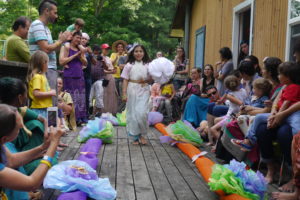
A kids’ camp participant models her fun fashion statement for fellow campers and their parents, her creation designed during a craft activity.
Meanwhile teenagers, some of them also the children of “kulis,” are staffing the Mela’s jam-packed all-day Bhajan Kutir. Beaming from ear to ear, roaring out the holy names, and completely absorbed, they clearly wouldn’t want to be anywhere else.
Even the youngest kids are engaged. On the first day of the Mela, I sit with my two-year-old, Ambika, in the temple as other kulis do bhajanas. She rocks back and forth eagerly on my lap, grooving to the mantra with a huge grin on her face, until the leader stops. “Noooo!” she cries, throwing a fit until they start up again, and then she’s back to grinning and rocking.
“Back in 2006 at the first Mela, few of us organizers had kids,” says Govinda Syer, a charter member of the nonprofit behind the festival. “Now, each of us has at least one. That completely changes how we think about the event. Because now we’re thinking, how does each element work with children? How do we give them a good experience?”
Kulis who attended ISKCON’s early gurukulas, or boarding schools, did of course have some good experiences. But they also suffered from the mistakes and abuse of an immature educational system and staff. So today, they’re determined to give their own children a more positive experience of Krishna consciousness.
And that’s what lead organizer Bhima Walker is focusing on at Kulimela 2016. Sometimes it’s through making sure the next generation has a good time at the festival. And sometimes, it’s through discussing the Mela’s two main themes – Celebrating Family and Building Community – in seminars that may just help shape the future of ISKCON.
Investing in Our Future
By lunchtime on Wednesday, June 15, participants are lining up on the temple grounds to register and get their wristbands and t-shirts, tightly embracing old friends in emotional reunions, and getting excited about what’s to come.
Throughout the Mela around seven hundred kulis from North America, South America, Europe, and Australia will participate, as well as their children, and many first generation devotees too – all part of organizers’ efforts to bridge divides and broaden the meaning of the word “kuli” to its literal definition of “community.”
What’s more, the second generation attendees themselves are no longer just “youth,” as kulis are still often known throughout ISKCON. An erroneous and dated perception, it minimizes what they’re able to contribute. The kulis here range from their teens to their late forties, and many are working professionals – I chat to an Ernst & Young manager, an Android app developer, and an X-ray tech – as well as active contributors to their communities and, of course, parents.
These passions come out in the Mela’s two central plenary sessions. As a parent and a kuli myself, I’m hoping for some inspiration as I walk into a packed and buzzing community hall on Thursday for the first of these, “Celebrating Family.” And I’m not shortchanged.
Presentations by a mixed panel of first- and second-generation experts in their fields lead to a lively discussion with the audience and rousing calls to action.
There’s a consensus that focusing on healthy marriages and happy families will make for a stronger ISKCON. Kulis are encouraged to invest in the future by teaming together on projects that positively affect children in their local communities. They also discuss making lots of small specialized groups in their communities to encourage members’ interests and make them feel like they belong.
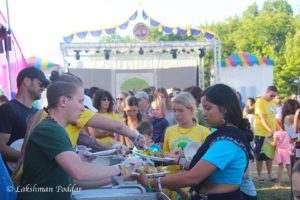
Delicious dinner prasadam prepared by a skilled kitchen crew led by Radha Dainton and Nityananda Prins is served out to a hungry crowd.
The conversation is always empowering. “We are the community, we are the temple, we are ISKCON,” says audience member Syamasundari Dasi from Alachua. “So if something needs to be done, we must step up and do it ourselves.”
And Chaitanya Mangala Dasa, one of Kulimela’s organizers, points out what a practical difference these efforts can make.
“I met Bhakta Vatsala Prabhu’s teenage son Kapila Baba today,” he shares. “Kapila had been in the kids’ camp I organized at the first Kulimela in 2006. He said, ‘I don’t know if you remember me, but I want you to know I had a great time.’ Now, he’s blissfully chanting at the Bhajan Kutir, and enthusiastically serving on the Festival of India tour.” Chaitanya Mangala’s voice cracks, and he fights back tears. “Who knows where he’s going to go from here?”
“Building Community,” the other main plenary session of the Mela, is no less inspiring. Pioneer kulis marvel at how far our community has come, and how wonderful it is to see the younger generations coming up. They also implore everyone to bridge the designations that divide us.
Others give practical reports on their community-building efforts. Gopinath Bloch talks about the Sanga Initiative, which keeps North American youth connected and active in Krishna consciousness. And Gopi Gita Dasi gives an enlivening report from Dallas, once infamous for the abuse early gurukula students suffered there. Today, its kuli-run TKG Academy dayschool has forty students, who are getting a fun, positive experience of Krishna consciousness that focuses on the dos rather than the don’ts, and who are in the top ninetieth percentile for academics in the state of Texas.
Beyond the two plenary sessions, festival goers further arm themselves to make a difference with the Mela’s nearly thirty seminars on parenting, homsechooling, child protection, finding the right marriage partner, permaculture, and arts like cooking, music, and drama. With multiple seminars taking place side by side, there’s a palpable uplifting energy as kulis buzz from class to class, laughing and chatting about what they’ve learned.
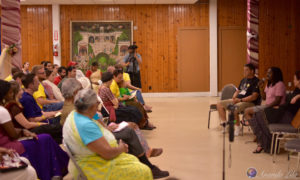
Pioneer Kulis Ananta Vrndavana Dasa (with microphone) and Karnamrita Dasi (to his left) are honored at a group appreciation led by Chaitanya Mangala Dasa (to Ananta Vrndavana’s right).
One of the most popular sessions is on Friday, when Karnamrita Dasi and Ananta Vrindavana Dasa, both alumni of Dallas and New Vrindaban gurukulas, are honored for their unique contributions and sacrifices as pioneer kulis. As they share memories of good times and challenges, there’s uproarious laughter and tears, with not a dry eye left in the house.
The appreciation ceremony is a feature that organizers want to continue at every Kulimela, inspired by Srila Prabhupada’s statement in a Nectar of Instruction purport that “The International Society for Krishna Consciousness has been established to facilitate these six kinds of loving exchanges between devotees.” The hope is that the devotee appreciation will continue between Melas, too.
Unity Through Krishna Culture
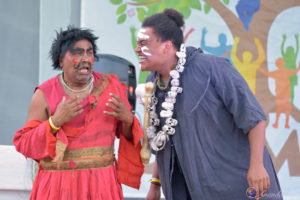
The Bhaktivedanta Players, from the UK, perform “Sanatana Gosvami and the Touchstone.” (Jaya Krsna Dasa on left, Radhe Sivyer on right.)
Dusk has fallen. Kulis are crowded onto a green New Vrindaban hill, on an open end of the lush Community Garden, for a different kind of appreciation event. Bass is pounding and multicolored lights are flashing on a huge stage topped with Lord Jagannatha’s smiling face. A hyped-up audience is dancing in sync, fists pumping to the funky reggaeton beats.
On the stage Arjuna Moreira, aka Krishna Tone, shouts, “Who we thinkin’ of?” and the crowd roars back in one voice, “Krishna!!!”
Kulimela might look like a regular music festival, but there’s a difference: both performers and audience are constantly expressing their love for the Lord.
This Kulimela has one marked difference from the first one in 2006, too: the family atmosphere. The adults are having fun, but there are also special stageside tents for children who need to take a nap. And best of all, Krishna Tone has invited a huge crowd of young kids onstage to dance with him. They strike Radha and Krishna poses, do cartwheels, and take bows, looking hugely pleased with themselves and delighting their parents’ hearts.
This mood of supportive community stretches out to every part of the nightly entertainment. As always, Kulimela champions new talent, like fifteen-year-old Pishima Calloway from Gita Nagari, who blows everyone away with her huge voice. Singing soulful lyrics like “He is my savior, my everything, I sing for Him,” she hits high notes that elicit a spontaneous roar of applause from the crowd.
The seasoned performers dazzle too – Ananda Monet with her operatic Mahabharata songs, Anapayini Jakupko and Ganga Sheth with their evocative dance, and Dattatreya Yogeshvara Dasa with his magic – all thrill and touch hearts.
Meanwhile with her runway show “Forest of Vrindavana: Fashion Revolution,” Krishna Devata McComb showcases the new world of kuli designers. They display incredible handloomed dhotis and kurtas, outfits inspired by the Rajasthani tribeswomen of India, and gopi dresses with elaborate accessories like beaded umbrellas and decorated waterpots. The show also honors its theme by donating wool shawls to the widows of Vrindavan, India, and funds to New Vrindaban’s cow protection program.
The grand finale comes with fifty lanterns being released into the night sky for fifty years of ISKCON, sent off with individual and group prayers. As the golden splashes of fire float above the crowds, the Mayapuris burst onstage with their unique brand of rocking kirtana.
“How many of you had a Quaker Oats oatmeal box for your first mridanga?” Visvambhar Sheth asks as the amplified mridanga thunders into earshot. Kulis go wild, moshing, spinning, and busting their best temple dance moves to songs like “Jai Sri Krishna” and “Sita Rama.” Holding his “whompers” to his ears, hype man Krishna Kishora Dasa invites everyone to chant louder and louder.
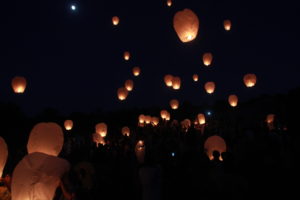
Festival participants releasing fifty sky lanterns at twilight (above), accompanied by chanting and prayers from the main stage, to celebrate and commemorate ISKCON’s fiftieth and Kulimela’s tenth anniversaries.
As the blistering set reaches its conclusion, and everyone is left grinning, panting, and sweating, Balarama Tirtha Dasa leaves us with a heartwarming thought: “We may all be such varied people spread across all corners of the world,” he calls out. “But we all have one thing in common: we love Krishna, and we love Srila Prabhupada!”
This intrinsic unity in kulis, and the stunning cultural talent on display, recalls a letter Prabhupada sent to Syamasundara Dasa when his daughter Sarasvati was two. “I am very glad to learn about the activities of your nice daughter,” he wrote. “I am sure she will be a great devotee and great preacher also in future. I want that on this Krishna culture the whole world can be united.”
Service for the Soul
There’s much to remember about Kulimela 2016 – the seminars, the performers, the ecstatic 24-hour kirtana closer. But perhaps most defining of all is the service – as organizer Kapila Monet comments, “A vital aspect of kuli culture is service, and that’s what we want it to be all about.”
Over the five days, hundreds of volunteers cook delicious prasadam meals, wash mountains of dishes, battle through weather challenges and lack of sleep to organize the entertainment and seminars, practice for hours to share their talents, staff the kids’ camp, and much more.
“The people who have the best experiences in a Kulimela are the ones who experience the pleasure and fun that goes into serving others,” says organizer Baladeva Keilman. “They get to meet new people and build a personal connection with them that they remember for years to come. It’s very special and rewarding.”
Baladeva hopes that putting on festivals such as Kulimelas will inspire kulis to serve their communities more and more from their hearts.
“They’re already doing it all around the world, and that’s something to be really proud of,” he says. “Despite everything that the first generation of kulis went through, that link, that desire to serve Srila Prabhupada and Krishna, is there. And it’s becoming stronger as we share it with our children. That’s why we put such a strong focus on giving them wonderful positive experiences in relation to Krishna. Because then their link to Prabhupada’s mission will be that much stronger. As Prabhupada famously said, it will be these future generations that will take his movement forward.”
I believe him. I’m just about to take Ambika to another kirtana, and I’m warning you – if it stops, she’ll scream.
After all, she already loves Krishna – all we have to do is surround her with reasons to keep loving Him.
For more information, visit http://kulimela.org/ or https://www.facebook.com/kulimela.
What is a “Kuli”?
Gurukulis were students in ISKCON’s early spiritual boarding schools, or gurukulas. When they graduated, they remained bonded through their shared experiences and kept the moniker. The name was later shortened to “Kuli,” and broadened to include anyone who grew up in the Hare Krishna movement, even if they hadn’t attended gurukula.
Today, Kulimela organizers have further broadened the term Kuli to mean “a member of a particular family, tribe, or community,” which is closer to its literal Sanskrit meaning. This also accommodates the needs of their complex, expanding group.
Kulimela, meanwhile, means “Family Festival,” or as organizers like to say, a chance to “Celebrate Community!”
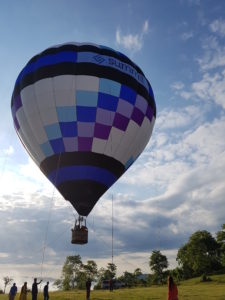
Early morning balloon rides offer festival participants a bird’s-eye view of Srila Prabhupada’s Palace and other parts of New Vrindaban.
The Kulimela Effect
The first Kulimela, held in New Vrindaban in 2006, was an attempt to bring kulis from all over the world together to support each other and explore what they could achieve.
The result – “The Kulimela Effect” – has been expanding out in waves of collaborative service ever since.
Ten follow-up Melas were held in France, Germany, Belgium, Russia, Siberia, Australia, New Zealand, and, in the U.S., Los Angeles, Alachua, and once again New Vrindaban.
Kulis were inspired to form local networks to contribute to their own communities, and many started major annual kirtana festivals: New Vrindaban’s 24-Hour Kirtan, Alachua’s Festival of the Holy Name, Belgium’s Radhadesh Mellows, Italy’s Sravanam Kirtanam Festival, and Spain’s Holy Name Festival all sprouted from Kulimela.
There were also worldwide events to raise consciousness – Global Kirtan for the Yamuna River, and Golden Age Global Kirtan. And in Alachua, Florida, Kulimela inspired second-generation devotees to build an annual “Village of Vrindavan” experience every Janmashtami at their local temple.
In addition Kulimela Association, the nonprofit behind the Melas, has backed spiritually motivated philanthropic efforts. It is the record label for the Grammy-nominated album Bhakti Without Borders, which donates all its profits to clothe, feed, and educate underprivileged girls in Vrindavan, India. It also partners with Krishna Devata to distributes saris and shawls to Vrindavana’s widows and sadhus.
Looking to the future, Kulis see that the possibilities are endless. But whatever comes next, its sure to incorporate Kulimela’s four essential themes: Building Community (Sanga), Serving Together (Seva), Empowering Each Other (Sakti), and Transforming Hearts (Bhakti).
ECO-Vrindaban Board Meeting Minutes 03/19/2017
ECO-Vrindaban Board Meeting Minutes 03/19/2017
Mission Statement: ECO-Vrindaban promotes simple living, cow protection, engaging oxen, local agriculture, and above all, loving Krishna, as envisioned by Srila Prabhupada, the Founder-Acharya of ISKCON New Vrindaban.
Participating Directors: Chaitanya Mangala, Kripamaya, Ranaka, Sri Tulasi Manjari and Vraja
Participating Advisors: Devala, Jaya Krsna
Participating Managers: Nitaicandra
Recording Secretary: Jamuna Jivani
1. 2017 ISKCON North American Farm Conference Update
Sri Tulasi Manjari reported that the organizers discussed setting the schedule, creating an open-invitation policy to include the broader community of farmers, and promoting the event through flyers and a Facebook page.
2. Ranaka’s Monthly Report
- The Temple Barn electric project has been completed.
- Currently six cows are being milked, producing approximately 17 gallons per day.
- Manjari was moved to the Temple Barn from the Valley Barn, due to her being scheduled to freshen the middle of April. Three young heifers are still residing at the Temple Barn.
- Jatendra, a volunteer, has been helping with milking and barn activities for the last few weeks.
- Ray finished working on the inside of the school. He still needs to build some more shelving and do some outside work on the building.
- Shyama Gopal, a very old ox residing at Nandagram, recently left his body.
- Ranaka has been communicating with Fil & Sukhayanti. Fil plans to participate in the on-site meetings.
- He is helping with preparations for next week’s Joint Board Meetings.
- He is working on finalizing ECO-V’s 2016 review with Rama Associates.
3. Nitaicandra’s Monthly Report
- Nitaicandra will be back in New Vrindaban this coming week.
- The Community Garden strawberry patch has been heavily mulched.
- Syam Gopal the ox left his body.
- A wind storm dropped some trees on the fence line in Nandagram.
- Caitanya Bhagavat has been working on repairs.
- Next week Nitai will start vegetable seedlings and pick up our potato seeds.
4. On-Site Board Meetings
The tentative weekend schedule:
Friday
Afternoon: ECO-V, INV and the Village Council members will meet at the Wellness Center from 3-6pm.
Dinner: With all three Boards, open to all
Saturday
Morning: Department Head Presentations
Lunch break
Afternoon: Community Dialog
Dinner: With all three Boards, open to all
Sunday
Morning: Meet with Fil and ECO-V advisor candidates. Walk the altered Rover Pipeline route at Madhuban and Vrindaban, see exterior wall and kitchen renovations at Prabhupada’s Palace, and visit the schoolhouse and Yogashala, if time permits.
Sunday Temple Program.
Afternoon: Service Appreciation Ceremony to honor Kelly Howard Carter, Tejomaya & Kelly, and Advaita & Madri.
5. ECO-V Website Update
Sri Tulasi Manjari reported that she spoke with Bhismadeva and discussed the design and graphics.
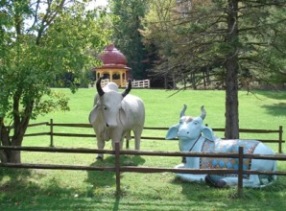
Welcome to Brijabasi Spirit
Thank you for taking the time to visit the New Vrindaban community blog. Think of visiting our blog as making a virtual pilgrimage.
Hare Krishna Hare KrishnaKrishna Krishna Hare Hare
Hare Rama Hare Rama
Rama Rama Hare Hare
"May cows stay in front of me; may cows stay behind me; may cows stay on both sides of me. May I always reside in the midst of cows."
Hari Bhakti-vilas 16.252
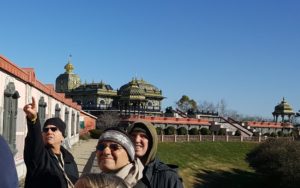
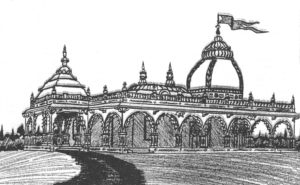
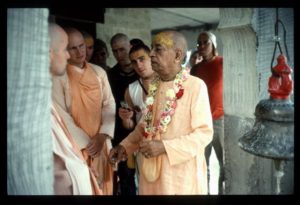
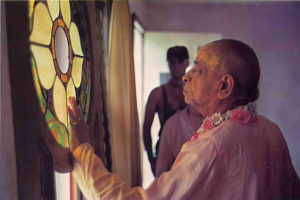
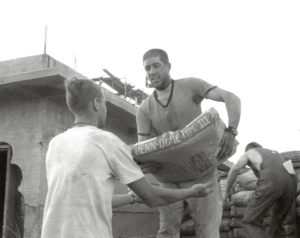
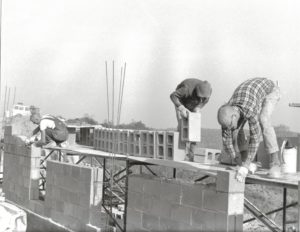
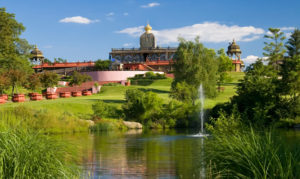

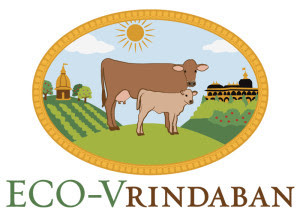























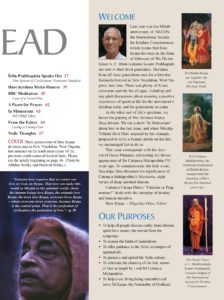

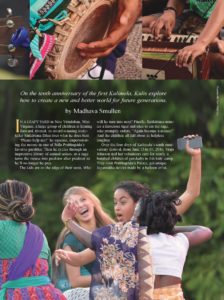
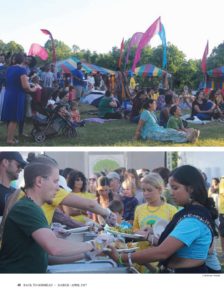
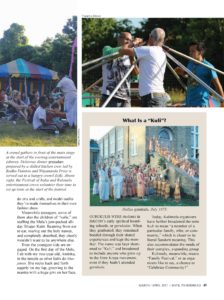
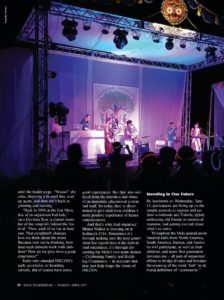
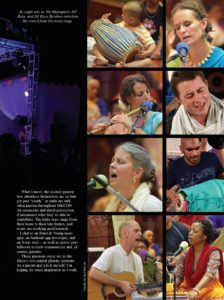
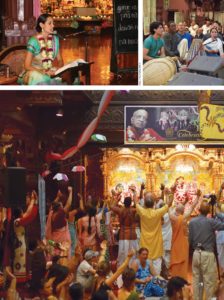
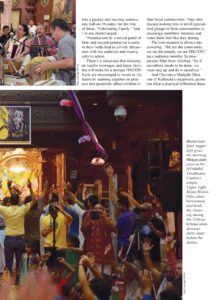
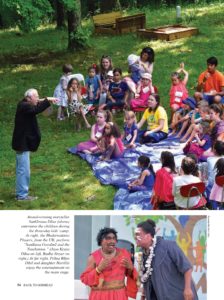
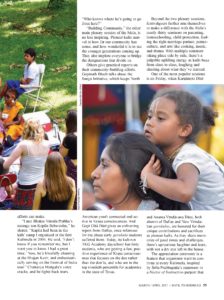
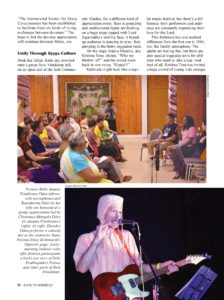
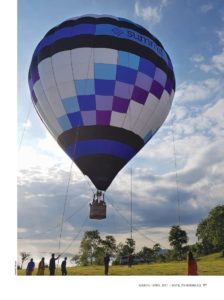
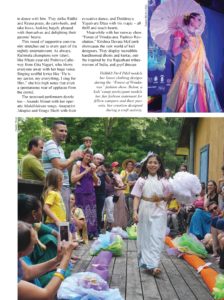
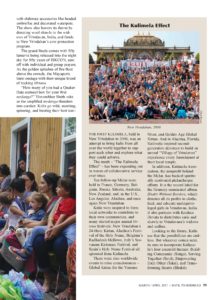
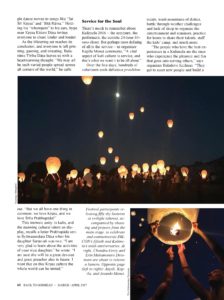
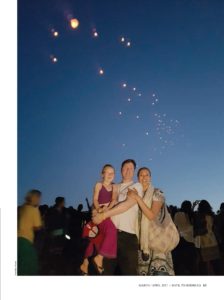
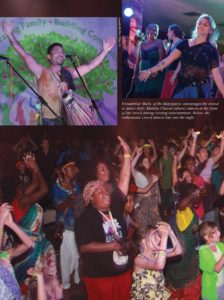
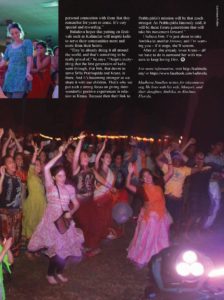
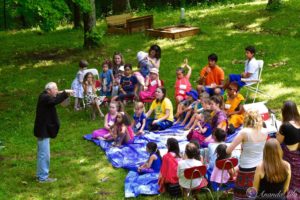
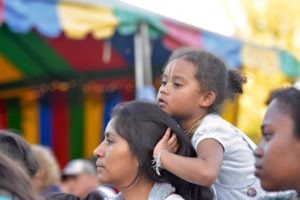
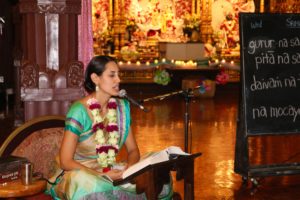

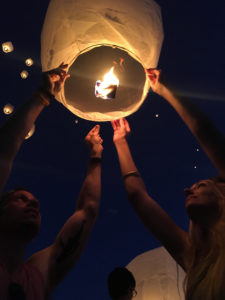
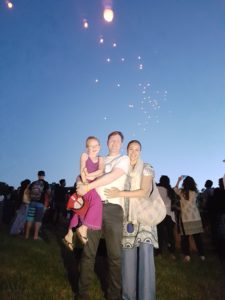
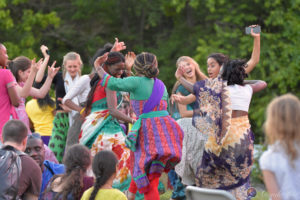
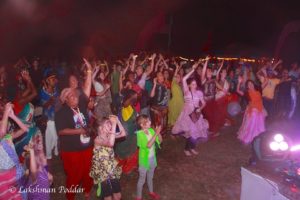






Recent Comments